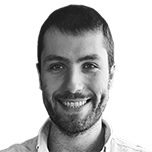Invest in Grainger: a landlord with growth potential
Grainger is putting years of uncertainty behind it and investing for expansion


The private housing rental market in the UK used to be dominated by small-time landlords, but this has changed over the past decade as large companies have spent billions developing purpose-built rental homes. According to Savills, in 2015 there were just 5,000 built-to-rent (BTR) homes in the UK. At the end of September, that number was 120,000, with a further 150,000 in various stages of development.
BTR professional landlords have substantial economies of scale and can leverage huge balance sheets to advance housing projects. These projects are built around communities of hundreds of homes, lowering construction and maintenance costs. The largest listed player in the sector is Grainger (LSE: GRI) and its latest results illustrate the scale of the opportunity in the BTR market.
For the year to the end of September 2024, the company reported net rental income growth of 14% year on year, helped by the addition of 1,236 new homes across its portfolio. Like-for-like rental growth across the portfolio was 6.3% during the year, with the company pushing through hikes of 6.8% on lease renewals signed during the period. It ended the financial year with an occupancy rate of 97.4%, showing that, despite the rent hikes, with a structural shortage of homes in the UK, demand hasn’t taken a hit.
MoneyWeek
Subscribe to MoneyWeek today and get your first six magazine issues absolutely FREE

Sign up to Money Morning
Don't miss the latest investment and personal finances news, market analysis, plus money-saving tips with our free twice-daily newsletter
Don't miss the latest investment and personal finances news, market analysis, plus money-saving tips with our free twice-daily newsletter
Grainger leans into market opportunity
This is the second year in a row the group has registered net rental income growth in the low teens, which is below the market average. Headline rent inflation, according to the Office for National Statistics, is around 7.5%, suggesting Grainger can push through rent rises in 2025 (the company has confirmed it expects rents to grow above the long-term average of 3%-3.5% in the year).
Grainger is leaning into the market opportunity. At the end of September, it had an operational portfolio of 11,069 private rental properties with a further 4,730 new homes in its build-to-rent pipeline. On top of this organic growth, management has been selectively acquiring assets in cities where it already has a strong presence. In July, the group acquired the 135-home property The Astley in Manchester for £31 million from M&G Real Estate, using cash from the recent sale of an 80-apartment asset in London for £27 million. City analysts believe Grainger has the potential to do a lot more of these deals as sub-scale operators move out of the sector.
Grainger’s edge is its scale. The company has a 75% gross rental margin, with the other 25% being reinvested back into the portfolio. Grainger could instantly boost its margins by cutting spending, but it is taking a longer-term approach. By reinvesting, it’s able to maintain the quality of its assets and, as a result, the market value of those assets.
Analysts at Panmure Liberum recently noted that thanks to this “constant capex”, Grainger’s older assets can still command rents comparable to the newer units (97%, despite the asset being over a decade old in one case). This means the company has a “constantly economically relevant and competitive asset” and investors do not have to factor in the risk of “inheriting a capex liability”.
This “constant capex” aside, the company is also forecasting significant additional benefits from increasing scale over the coming years. “The investment and focus we have placed on creating the UK’s leading build-to-rent operating platform means that we can leverage our planned growth using our central platform and deliver significant margin gains,” says CEO Helen Gordon in the company’s full-year figures. Earnings before interest, tax, depreciation and amortisation (Ebitda) margins are set to grow by six percentage points to more than 60% by the financial year of 2029. Part of this will be achieved by converting Grainger into a real estate investment trust (Reit), something the group has been working towards for years.
To convert to a Reit, a company must generate 75% of its income from property rental income, a hurdle Grainger has just surpassed (81% at the end of the last fiscal year). The cost savings from the shift could be worth as much as £10 million, and it will give the group more flexibility by opening up the field to a wider range of investors and lowering the cost of capital to fund growth.
Under the Reit structure, the company must also distribute 90% of its rental property income every year to investors. Management has been moving the company towards this goal since it outlined its Reit plans. Grainger’s dividend was increased 14% to 7.6p in the last fiscal period, and analysts have pencilled in a distribution per share of 9.9p per annum by 2026, a dividend yield on the current share price of 4.2%. These forecasts are based on management’s growth projections, which have Epra earnings (a measure of operational performance and net income) rising 50%, even after accounting for higher interest rates on the firm’s debt.
Buy Grainger as shares go cheap
For the past five years, the group has been working towards its Reit transition and it’s been difficult for investors to determine where the group will end up in the medium term. Much of this uncertainty is now in the rear-view mirror. Grainger has built a solid platform as an established BTR player with multiple growth catalysts on the horizon. So there’s scope for the stock to re-rate. At present, Grainger is trading at a discount of around 22% to its September Epra net tangible asset value (NAV) of 298p. That seems cheap for a business that is likely to see mid- to high-single-digit earnings growth over the coming years, as well as substantial dividend growth.

This article was first published in MoneyWeek's magazine. Enjoy exclusive early access to news, opinion and analysis from our team of financial experts with a MoneyWeek subscription.
Get the latest financial news, insights and expert analysis from our award-winning MoneyWeek team, to help you understand what really matters when it comes to your finances.

Rupert is the former deputy digital editor of MoneyWeek. He's an active investor and has always been fascinated by the world of business and investing. His style has been heavily influenced by US investors Warren Buffett and Philip Carret. He is always looking for high-quality growth opportunities trading at a reasonable price, preferring cash generative businesses with strong balance sheets over blue-sky growth stocks.
Rupert has written for many UK and international publications including the Motley Fool, Gurufocus and ValueWalk, aimed at a range of readers; from the first timers to experienced high-net-worth individuals. Rupert has also founded and managed several businesses, including the New York-based hedge fund newsletter, Hidden Value Stocks. He has written over 20 ebooks and appeared as an expert commentator on the BBC World Service.
-
 Investors will reap long-term rewards from UK equities
Investors will reap long-term rewards from UK equitiesOpinion Nick Train, portfolio manager, Finsbury Growth & Income Trust, highlights three UK equities where he’d put his money
-
 The graphene revolution is progressing slowly but surely
The graphene revolution is progressing slowly but surelyEnthusiasts thought the discovery that graphene, a form of carbon, could be extracted from graphite would change the world. They might've been early, not wrong.
-
 'Investors will reap long-term rewards from being bullish on UK equities'
'Investors will reap long-term rewards from being bullish on UK equities'Opinion Nick Train, portfolio manager, Finsbury Growth & Income Trust, highlights three UK equities where he’d put his money
-
 The graphene revolution is progressing slowly but surely – how to invest
The graphene revolution is progressing slowly but surely – how to investEnthusiasts thought the discovery that graphene, a form of carbon, could be extracted from graphite would change the world. They might've been early, not wrong.
-
 A strong year for dividend hero Murray International – can it continue its winning streak?
A strong year for dividend hero Murray International – can it continue its winning streak?Murray International has been the best-performing global equity trust over the past 12 months, says Max King
-
 The shape of yields to come
The shape of yields to comeCentral banks are likely to buy up short-term bonds to keep debt costs down for governments
-
 The sad decline of investment clubs – and what comes next
The sad decline of investment clubs – and what comes nextOpinion Financial regulation and rising costs are killing off investment clubs that once used to be an enjoyable hobby, says David Prosser
-
 How to profit from the UK leisure sector in 2026
How to profit from the UK leisure sector in 2026The UK leisure sector had a straitened few years but now have cash in the bank and are ready to splurge. The sector is best placed to profit
-
 Who won the streaming wars?
Who won the streaming wars?The battle of the TV and film streaming giants for dominance looks to be entering a final phase. The likely winner may surprise you, says Simon Wilson
-
 'Investors should expect a good year for equities'
'Investors should expect a good year for equities'Opinion The economy is positive, and investors are still cautious, says Max King